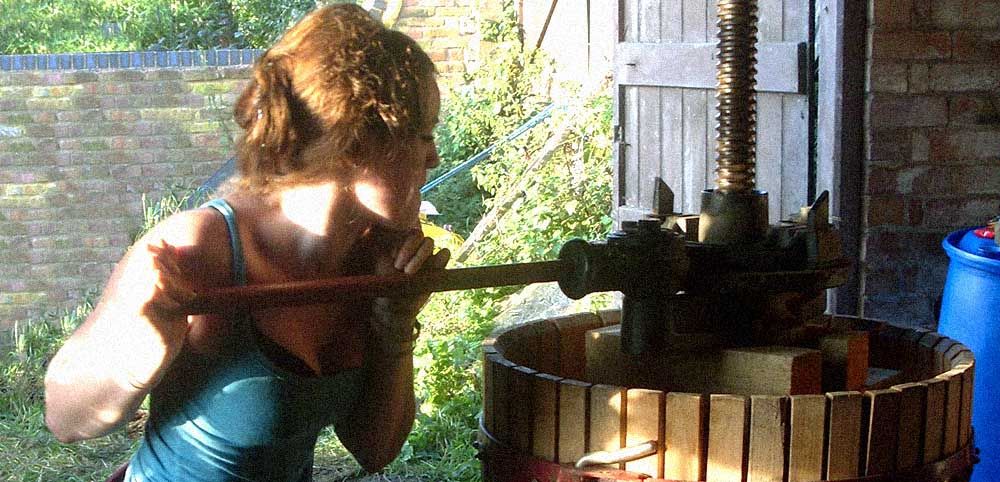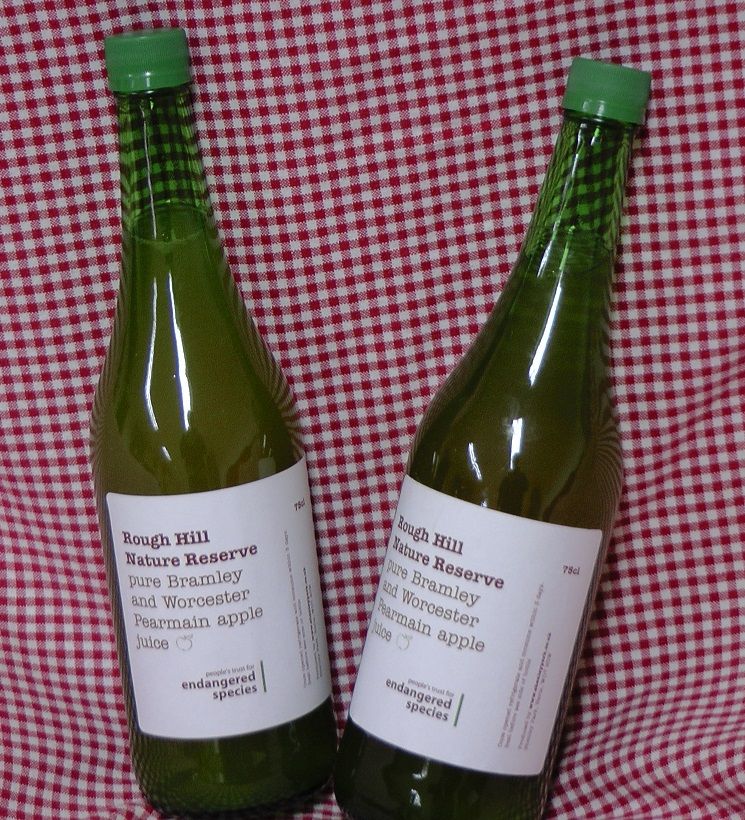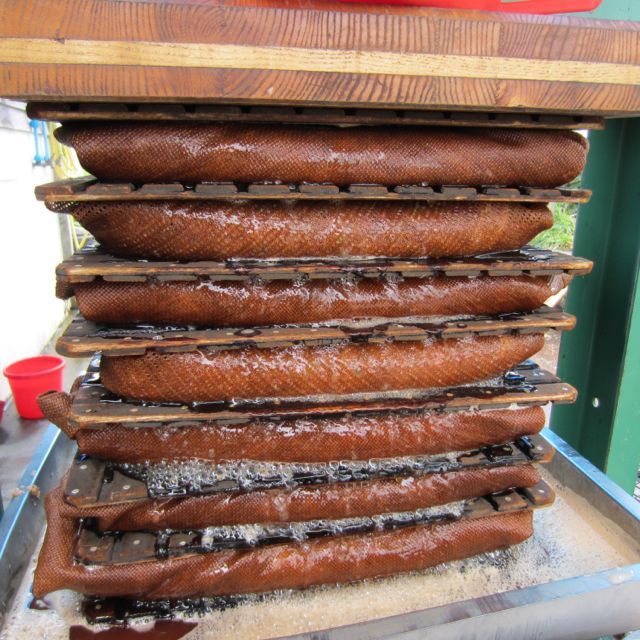Pressing and bottling

Crushing fruit and catching the juice in a bottle may sound simple, but the basics are not always obvious
The fruit
Save the best fruit for the bowl and the kitchen. Throw any small, bruised, scabbed, or deformed material and windfalls into the mill (aka scratter). Damage from animals and pests like codling moth does not, within reason, affect the juice as the mangy parts are generally not going to yield any juice. Extensively bruised and mouldy fruit should be left for the birds. This is not only because of the impact on flavour, but because of the potentially carcinogenic mycotoxin (myco = fungus) patulin that is formed when fruit rots. The high heavens won’t fall if a little gets in, but don’t rely on fermentation destroying patulin as this depends on many factors – see this paper for extensive and recent patulin information.
Bottles
For making juice, plastic or glass bottles and lids can be bought new or  saved from other products. But not all bottles are equal. The milk carton types don’t reseal properly but the clear plastic bottles used for OJ or smoothies for example are perfect and will handle the pasteurisation process as long as it’s kept to around 70 Celsuis. Anything fermented really needs to go into glass, ideally sealed with a new crown cap.
saved from other products. But not all bottles are equal. The milk carton types don’t reseal properly but the clear plastic bottles used for OJ or smoothies for example are perfect and will handle the pasteurisation process as long as it’s kept to around 70 Celsuis. Anything fermented really needs to go into glass, ideally sealed with a new crown cap.
Clean enough will do
Presses, cheesecloths, buckets and jugs etc. do not need to be sterile. Free of spiders and woodlice if you’re squeamish is generally good enough (but not critical!). Bottles for juice should be reasonably clean. The pasteurisation takes care of sterilisation after bottling, including any little flies that get into the juice during the press. Fermentation bins, demijohns, airlocks, bottles and so on for fermenting, on the other hand, should be sterilised. If your harvest is picked clean from the tree it can go straight into the mill, but if you have a lot of windfalls you’ll need to wash off the flotsam in a bucket of water before dropping them in.
Home-made ciders, often referred to as craft or artisan, do not require juice to be sterilised or have added yeast, but doing so can improve consistency of results. Naturally occurring yeasts both in the fruit and on the skin will start the fermentation on their own, but will produce variation in results. A little known natural function of wasps is that they’re an excellent vector for wild yeast dispersal, carrying the tiny fungi cells on their feet as they feed, so don’t be too eager to banish them from your orchard. The equipment, walls and roof beams of old cider mills have been found to be covered in a specific assemblage of local yeasts that would impart a consistent flavour to a mill’s produce.
Juicy how-to
Allowing the fruit to ripen well will yield more juice containing more sugar, but this is more important for cider than juice. Once the equipment is all set up and ready to go, start milling the fruit (aka scratting, mashing, crushing, or pulping). Everyone’s set-up will be slightly different depending on scale and equipment. Mash the fruit directly into hessian sheets or mesh-bags to make the ‘cheeses’. In the case of apples, the tannins in the pomace will start oxidising the flesh (going brown) quickly, but this is normal. If the pomace is left for a while, enzymes break down the flesh enabling the  release of more juice, but the oxidisation can be excessive and a little off-putting. Try out different methods to discover what gives the best results according to your varieties and taste.
release of more juice, but the oxidisation can be excessive and a little off-putting. Try out different methods to discover what gives the best results according to your varieties and taste.
At this point, if you are making fruit juice, you may wish to add the anti-oxidant ascorbic acid, which is the proper name of vitamin C (which, it has to be said, sounds much less toxic). As much of the natural vitamin C is destroyed during pasteurisation this is not such a bad idea. The juice will rapidly transform from the colour of sludge to a far more appealing green, and the taste becomes crisp and clean rather than like bruised fruit (which is essentially what it is). This same transformation happens during pasteurisation but not as completely as when anti-oxidant is also used. Cider is more complex and not considered here.
Pasteurisation
Find the largest pot suitable for the stove-top. Drop something in the base to create a spacer and quarter fill with water. Add as many bottles, lids off, as will fit and, if necessary, top up the water using a jug. Place a thermometer in the central one and turn on a gentle flame. Bring the heat slowly up until the thermometer is 70-75°C and hold it there for at least 10 minutes. There’s more detail to this (search for Pasteurisation Units) but essentially the longer it pasteurises, the less chance you have it will start fermenting, but flavours will start to suffer.
